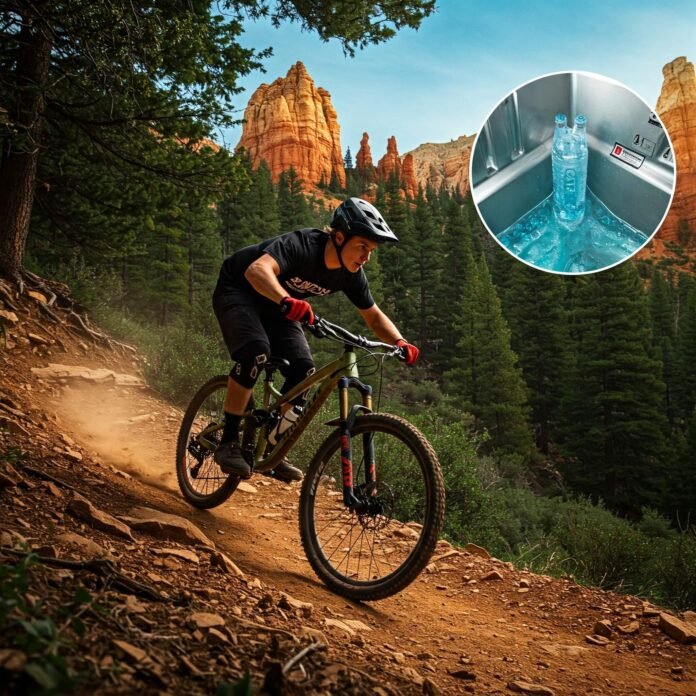Extreme sports push your body to its limits, demanding peak performance and resilience. Whether you’re shredding down a mountain, catching waves, or climbing sheer cliffs, recovery techniques for extreme sports are critical to staying in top shape. Without proper recovery, you risk burnout, injury, or diminished performance. This blog explores the best recovery strategies to help you recover like a champion, backed by science and real-world examples.

Why Recovery Techniques Matter for Extreme Sports
Extreme sports aren’t just physically demanding—they test your mental grit and endurance. Unlike traditional sports, the high-risk nature of activities like base jumping or big-wave surfing means even minor fatigue can lead to serious consequences. Effective recovery techniques for extreme sports reduce muscle soreness, prevent injuries, and boost long-term performance.
Studies show that athletes who prioritize recovery can improve performance by up to 20% (Sports Medicine Journal). For example, pro surfer Kelly Slater credits his longevity in the sport to disciplined recovery practices, including ice baths and mobility work.
Top Recovery Techniques for Extreme Athletes
Here are the most effective recovery techniques for extreme sports to keep you performing at your best:
1. Active Recovery for Muscle Repair
Active recovery involves low-intensity movement to promote blood flow and reduce muscle stiffness. Think light jogging, yoga, or swimming after an intense session.
- Why it works: Increases circulation, delivering oxygen and nutrients to muscles.
- How to do it: Spend 15-20 minutes on a low-impact activity the day after a big session.
- Example: Pro skateboarder Tony Hawk uses yoga to stay limber after long skate sessions.
Pro Tip: Try a dynamic stretching routine to target key muscle groups. Check out Yoga Journal for beginner-friendly flows.

2. Cold Therapy for Inflammation Control
Cold therapy, like ice baths or cryotherapy, is a go-to for extreme athletes to reduce inflammation and speed up recovery.
- Why it works: Constricts blood vessels, reducing swelling and flushing out metabolic waste.
- How to do it: Submerge in an ice bath (10-15°C) for 10-15 minutes post-workout.
- Example: Freestyle skier Gus Kenworthy swears by cryotherapy to recover after grueling training days.
Data Point: A 2018 study in the Journal of Athletic Training found that cold therapy can reduce muscle soreness by 30% within 24 hours (Journal of Athletic Training).
3. Nutrition for Optimal Recovery
Fueling your body with the right nutrients is critical for recovery techniques in extreme sports. Protein repairs muscle damage, while carbs replenish energy stores.
- Key nutrients:
- Protein: Aim for 1.6-2.2g per kg of body weight daily (e.g., chicken, eggs, or plant-based protein).
- Carbs: Consume 4-7g per kg of body weight to restore glycogen.
- Hydration: Drink at least 2-3 liters of water daily, more during intense sessions.
- Example: Mountain biker Kate Courtney uses protein shakes and carb-rich meals to recover after races.
Resource: Learn more about sports nutrition at Academy of Nutrition and Dietetics.
4. Sleep: The Ultimate Recovery Tool
Sleep is non-negotiable for extreme athletes. It’s when your body repairs tissue, balances hormones, and consolidates muscle memory.
- Why it works: Deep sleep triggers the release of growth hormone, essential for muscle repair.
- How to do it: Aim for 7-9 hours of quality sleep. Use blackout curtains and avoid screens before bed.
- Example: Climber Alex Honnold prioritizes sleep to maintain focus during high-stakes ascents.
Pro Tip: Track your sleep with apps like Sleep Cycle to optimize recovery.

Preventing Injuries with Recovery Strategies
Injury prevention is a key benefit of recovery techniques for extreme sports. Overuse injuries, like tendonitis or stress fractures, are common in high-intensity sports. Here’s how to stay safe:
- Foam Rolling: Releases muscle tension and improves flexibility. Spend 10 minutes daily targeting sore spots.
- Mobility Work: Incorporate exercises like hip openers or shoulder mobility drills to maintain range of motion.
- Regular Check-ins: Work with a sports physiotherapist to catch potential issues early.
Example: BMX rider Nigel Sylvester uses foam rolling and physio sessions to avoid injuries during intense stunts.
Resource: Explore mobility drills at MoveU.
Actionable Takeaways to Recover Like a Champion
To integrate recovery techniques for extreme sports into your routine:
- Schedule active recovery sessions 1-2 times per week.
- Experiment with cold therapy after intense workouts.
- Prioritize post-workout nutrition within 30 minutes of training.
- Create a sleep-friendly environment for better rest.
- Invest in injury prevention tools like foam rollers or physio sessions.
Conclusion: Master Recovery for Extreme Sports Success
Mastering recovery techniques for extreme sports is the key to performing like a champion. By prioritizing active recovery, cold therapy, nutrition, sleep, and injury prevention, you’ll stay stronger, faster, and safer in your sport. Start small, experiment with these strategies, and watch your performance soar.
What’s your go-to recovery technique? Share in the comments below!
Outbound links:
National Strength and Conditioning Association (NSCA):https://www.nsca.com/
American College of Sports Medicine (ACSM):https://www.acsm.org/
PubMed Central (PMC):https://www.ncbi.nlm.nih.gov/pmc/ (For research articles on sports recovery)




